After 15 years and 6 countries of wanderings, my husband and I decided (well, ok, I insisted) it was time to settle down. After being mired in abstractions for so long, I’ve got the overwhelming desire to do something creative that is tangible, visible, and concrete for a change.
Since we are not tied to geography or country by work, we had a wide open choice of places. We quickly narrowed the choices down to Europe, since we were already here and practicalities were therefore easier. Catalonia, Languedoc, Brussels, Vienna, Malta, and Germany (in no particular order) made the short list.
I adored Vienna when we lived there, miss my friends, and would go back in a heartbeat. But in the time since we moved away, property prices went from quite cheap for a capital city to really expensive for our means. Our current finances could have bought a 100m2 flat in a center-convenient, multicultural but not yet totally gentrified neighborhood in 2005. In 2010 we could get a crappy closet in a far flung crappy neighborhood for that money. So to my great sorrow, Vienna got crossed off the list.
In Catalonia, we were interested in either Barcelona or a rural property. Barcelona properties are still hugely overpriced — apparently the Barcelonans have not yet been informed of Spain’s financial troubles or the housing crisis. We had to give up on the Barcelona idea quite quickly. We did look at, and fall in love with, a stunning, peaceful olive farm vaguely near Valencia. However, due diligence dragged up the myriad legal problems with buying rural properties in Catalonia which scared us away.
View of the front of the olive finca
View from the finca
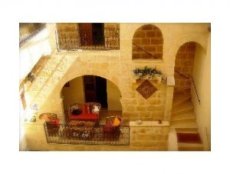
Houses of Character in Malta are stone-bulit, and tend to have courtyards with wells, archways, stairs, etc.
Languedoc seemed expensive, the climate much too windy on closer inspection, the French hassle-tastic. Malta seemed pretty (especially the houses of character), but too isolated and with a high cost-of-living. Brussels has extremely high property taxes (20%) and we were a bit intimidated by the red tape of moving there independently of an employer.
So, that left Germany. Familiar, sturdy, rigid Germany. Steady and not-too-high property prices. Maybe a bit boring. Crappy weather. My least favorite of the six European countries I’d tried by a wide mile. However, the practical arguments were very hard to beat. Thus the search began.
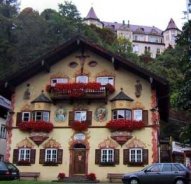
Lots of people love these Bavarian houses (especially American tourists), but I find them irredeemably tacky.
I found I have a rather intense dislike of German vernacular architecture. In particular, southern houses, with their tiny windows, white or light yellow facade, dark clunky wood balustraded balconies and gaudy flower boxes put together with no eye to color remind me too much of an old, chintzy, short-sighted, overly-critical auntie with big black hairy moles. I find the half-timbered houses that are so common here to be nauseatingly cute, with emphasis on the nausea. I had a tendency to houses not constructed primarily of wood in any case. I also really like big windows. We did want something with interesting architecture, and in any case, no cookie-cutter tract housing! We didn’t place any emphasis on age, nor did we have particular preferences for buildings not originally meant for residential purposes, but the tendencies were there.
View of neighboring, still unfinished, bookbindery loft unit in Leipzig. Gives a good view of the arches that attracted us.
After looking at some flats in Berlin (and me being reminded why I dislike that city so much) we settled on a loft in a former bookbindery in Leipzig which was within easy walking distance of the Gewandhaus. But the owner/developer was an unscrupulous bastard with dodgy demands for owners-association dues, who (perhaps fortunately) gazumped us shortly before the contracts were to be signed. This cured us of any willingness to buy a flat. And so the search continued.
One of the towers we looked at, this one in Thuringia.
We looked at towers (too cramped, one town was too full of neo-nazis), prisons (too big), old schools (both too large a renovation project), disused office buildings (asbestos, over-priced), town halls (sadly too small), a masonic temple (too out-of-the-way), factories (flood-prone area, or didn’t work out), a beautiful mid-century single story house with an atrium in Bavarian Siberia (too expensive to heat), warehouses (location, layout), former railway stations (middle of nowhere), barns, potato storage sheds, etc…. and churches. Lots of churches.
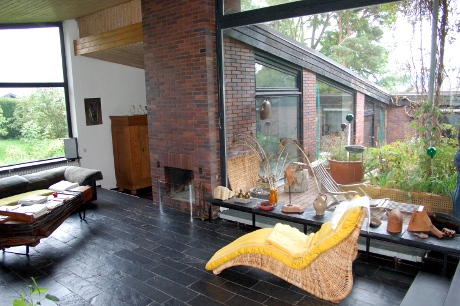
A wonderful mid-century modern house with an atrium and slate floors, on a big plot of land. The location wasn't right, and all that glass was mid-century too, so heating was expensive.
Germans have found not-God, and this leaves surplus houses of worship. The Catholics were selling, but they tended to unreasonable demands on what you could do with the building, or the building was not well kept up. The selection from the Protestants was uninspiring. And then we found a rich selection of wonderful buildings from the New Apostolic Church. I’d never heard of them before, and I always enjoy encountering new things and ideas. My German husband views them as strange and well out of the mainstream (Tithing? Volunteering? The horror!), but through my US-raised eyes, they seem small and quite progressive. In any case, they apparently take very good care of their modernist/post-modernist, big-windowed buildings.
The one we settled on seems to be insulated to more-or-less residential standard (which is a pleasant surprise), is in excellent shape, and isn’t listed. The not-listed status means we don’t get tax breaks, which is a bummer, but on the other hand, we can do what we like without having to consult some bureaucrat about paint colors or other trivialities. It’s quite small by American standards, but that’s ok. We are two people (and are likely to stay that way), and who wants to clean (and heat) so many rooms? The yard is adequate for two people who are emphatically not gardeners. The front is small and lovely. The back is a paving-stone-lined parking lot, which means no problems with parking, and you don’t have to mow it. Awesome. It’s not in a city, but it’s 10 km from a small one, and 30 minutes by car from another. Drive another 30, and you’re in another country. This means our daily and also professional needs can be easily met here. What more can you ask? (Well, we got a good price too.)
© 2011, Converting a Church. All rights reserved.
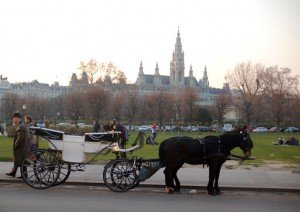
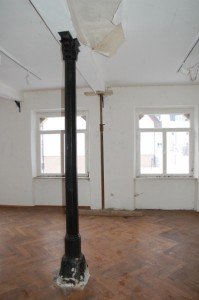
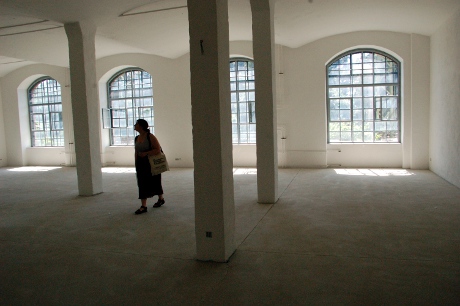
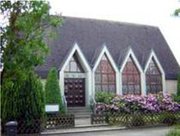
6 comments
2 pings
TheHighPriest says:
February 18, 2011 at 19:23 (UTC 1 )
why did you leave out the female Kurdish freedom fighters from the village school???
TheHighPriestess says:
February 18, 2011 at 23:07 (UTC 1 )
Well, I was trying to write about the spaces we looked at, not so much about the things on the wall. But, you’re right, it was rather remarkable. It’s here. Maybe if I’m less lazy later, I’ll edit.
J says:
February 20, 2011 at 18:16 (UTC 1 )
Hi and welcome to Germany. I’ve just approved you for the Expat Forum, so you have full access.
“Maybe a bit boring. Crappy weather. My least favorite of the six European countries I’d tried by a wide mile.”
I could have written this…lol
I agree, there are plenty of other places I’d rather live, but Germany is a practical decision.
TheHighPriestess says:
February 20, 2011 at 18:38 (UTC 1 )
Thanks a lot – for both the approval and the welcome!
Anton says:
February 18, 2012 at 06:02 (UTC 1 )
My website is not up and running yet, but I found you doing a Google search. I bought an old, Anglo Methodist chapel in Quebec, Canada, in late 2010 and am still working on renovating it. It would be good to make contact with you. Best, Anton
TheHighPriestess says:
February 18, 2012 at 09:37 (UTC 1 )
Hi Anton,
Nice to encounter another church renovator! Looking forward to seeing your site. I’d love to hear about your adventures in this undertaking! If you want to shoot me an email, it’s this site’s name without the com bit, all in lower case and smushed together, at gmail.
The Plan of Renovations: The Attic » Converting a Church says:
March 4, 2011 at 11:11 (UTC 1 )
[...] I wrote in The Search, we wanted a property within reasonable distance of a city, that had architecture that struck us as [...]
How to Get Permission to Convert a Former Sacred Building to a Home in Germany » Converting a Church says:
May 13, 2011 at 13:08 (UTC 1 )
[...] point up until the signing of the contract! (…which happened to us previously, as I noted in The Search). If any one of the parties has weak German skills, the services of a translator have to be hired [...]